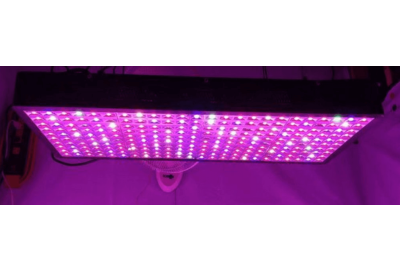LED vs HPS Grow Lights Comparison Guide
The LED vs HPS debate is still going strong in the world of cannabis lights. HPS solutions are a long-standing industry standard, but LEDs are a quality alternative that’s been gaining prominence, even becoming a go-to for some modern growers.
Complete beginners might find themselves overwhelmed with all the information out there. Today, we’re here to help you understand both systems’ comparative benefits and drawbacks and pick one that works best for you.
We’ll start slow, run through the basics before delving into the details, and help you decide whether to get LED or HPS for your indoor garden.
HPS vs. LED: what are they & how do they work?
Several elements are necessary to launch an indoor growing setup, but lights are the most significant aspect. After all, the lack of sun exposure is the primary differentiating factor between indoor and outdoor weed cultivation.
Once you buy cannabis seeds and start setting up the area where they’ll develop into gorgeous mother plants, you’ll ask yourself which lights will do the best job. One Google search is sure to return numerous results discussing HPS vs. LED grow lights.
What are these technologies, anyway? Will one produce better, quicker, healthier yields? How will they affect your budget? To answer these questions, you need to understand how these systems function.
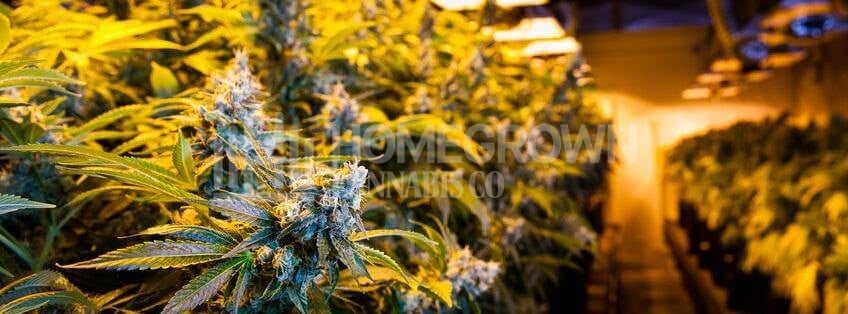
HPS grow lights
HPS is a subtype of high-intensity discharge lamps (HIDs), popular for their high efficiency and long shelf-life. They produce light through an interaction between electrodes and gas, most often metal halide or sodium.
As an abbreviation, HPS stands for ‘high-pressure sodium.’ Here’s how the system works:
- The section called an arc tube contains sodium, as well as some mercury and xenon.
- Electrodes receive voltage, which strikes the arc tube by ionizing the xenon.
- Mercury heats to raise the pressure and the voltage.
- Heated sodium vapor produces light when the pressure rises high enough.
Sodium, in particular, emanates a yellow-orange shade. The mediation of xenon and mercury often seen in these lamps results in a whiter light, making it seem more natural.
These systems are pretty powerful, producing more than 140 lumens per Watt, which is a lot of light for your cannabis to enjoy. They’re quite big, too, at least in the LED vs HPS comparison, with a metal hood and an exhaust fan on one side.
MH and HPS grow lights, commonly used high-intensity discharge systems, are still a go-to for old-school growers. Here, we’re focusing on the HPS vs. LED debate, but if you’re interested in the MH or HPS decision, you can check out our report on that matter.
How To Use HPS Lamps
Growing cannabis plants using HPS lights requires setting up the different components that make up the lighting system. To create optimal growing conditions, you’ll need to learn a little about wattage, plant-lamp distance and temperature regulation.
Choose The Right Accessories
Choosing the best components is key to getting the most from your HPS grow lights.
- Reflector. With an omnidirectional HPS bulb, a hood must be used to focus the light on the plants. There are many models available, the best ones being air-cooled hoods that fully enclose the bulb. They are glass-bottomed and can be equipped with exhaust fans. Make sure they have at least a 6-inch vent hole on both ends to ensure maximum airflow and cooling. Vent holes help diffuse the excessive heat emitted by the lamps.
- Ballast. This regulates the current and provides the required voltage to start the lamp. Without it, the lamps will overheat and burn out. Ballasts also produce a significant amount of heat. It’s best to opt for either a remote or digital ballast if your budget allows.
Remote ballasts have a long cord allowing them to be placed outside the grow room. A digital ballast uses computer chips to draw sufficient electricity to power the lights. They are widely regarded as the best kind out there because they maximize light output while simultaneously consuming less power.
Determine Appropriate Wattage
The appropriate wattage is dependent on the size of the grow space. Work towards at least 50 watts per square foot, 60 to 75 is acceptable.
| Recommended Minimum Wattage | Size of Grow Space |
| 200 watts | 2 ft x 2 ft |
| 450 watts | 3 ft x 3 ft |
| 800 watts | 4 ft x 4 ft |
| 1250 watts | 5 ft x 5 ft |
Set Grow Lights to the Correct Distance
HPS grow lamps give off a serious amount of heat. You will need to maintain a large gap between the plant and the light source. It has to be hung over the vegetation at a distance that is relative to its corresponding wattage. Putting enough gap between the two will prevent the heat from overwhelming the plants.
| Recommended Distance Based on Wattage | ||
| Wattage | Closest Distance | Farthest Distance |
| 150 W | 8 in (0.67 ft) | 12 in (1 ft) |
| 250W | 10 in (0.83 ft) | 14 in (1.17 ft) |
| 400W | 12 in (1 ft) | 19 in (1.58 ft) |
| 600 W | 14 in (1.17 ft) | 25 in (2 ft) |
| 1000W or over | 16 in (1.33 ft) | 31 in (2.6 ft) |
Increases in the plant-lamp distance means decreases in intensity of coverage, but it does mean the lamps cover a larger area. It is important to check the height of your plants regularly, lights must never be placed too close or too far from the plants.
Check out our report on "grow lights distance chart" for more details.
Install An Exhaust System
An exhaust system is the key to regulating the temperature inside the grow tent, keeping it within the optimal range. The exhaust run should be as short as possible because the farther the air has to travel, the more inefficient the system will become.
Keep the run as straight as possible to ensure a smooth air flow. If possible, vent the exhaust near the top of the tent or room - the warm air will rise naturally and pull cooler, fresh air back into the space.
LED grow lights
Light-emitting diodes, or LEDs for short, have a much more straightforward mechanism. These lamps consist of multiple individual diodes in a case with a heat reservoir and built-in fans.
They’re worthy contenders in the LED vs HPS discussion because of the color spectrum they produce. In isolation, each diode produces a single narrow color range. Grow lamps combine multiple types to create a scheme that mimics natural light and fits budding cannabis.
Green, red, and blue spectrums affect root formation, growth, and flowering. LED gives you the option to switch up your scheme in different stages of development.
These come in a single box that contains everything you’d need for your grow room. LEDs can go as high as 60 lumens per Watt, although around 32 is good enough for most gardening needs.
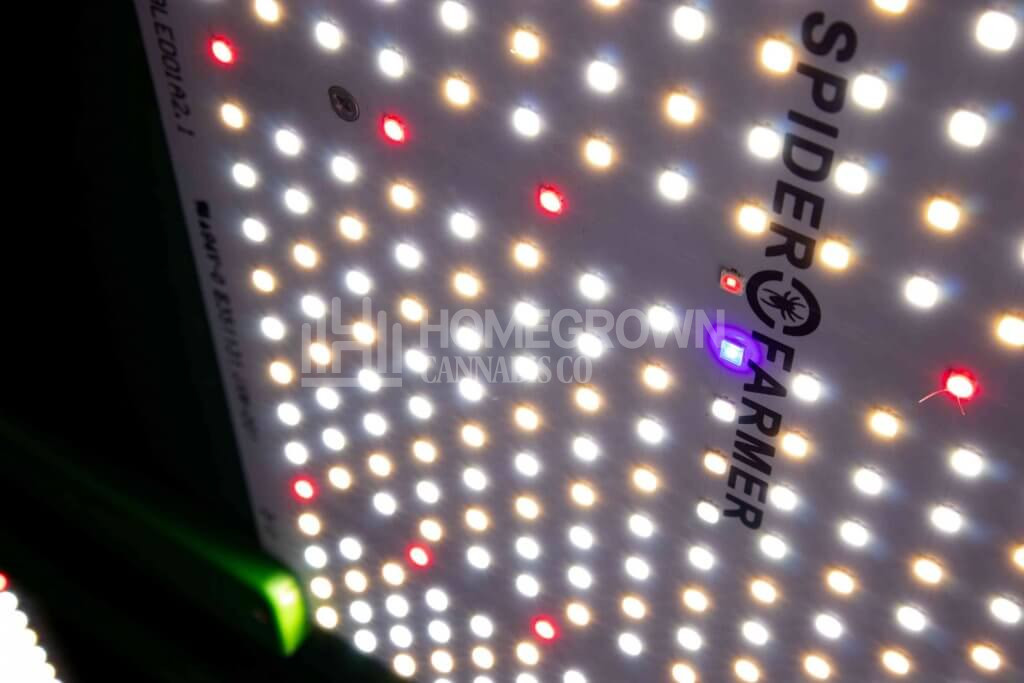
How To Use LED Lamps
Setting up an LED lighting system requires attention to detail such as light intensity, distance, setting and scheduling.
- Determine the Required Light Intensity. Providing cannabis plants with optimal lighting is vital. How many LED lights are required to feed the plants properly? Typically, a single 32 watt unit should be enough to cover 1 square foot. However, this varies depending on the layout of the growing area.
| Recommended Wattage | Size of Grow Space |
| 32 watts (~30 to 40 watts) | 1 ft x 1 ft |
| 128 watts (~120 to 140 watts) | 2 ft x 2 ft |
| 256 watts (~240 to 300 watts) | 2 ft x 4 ft |
| 288 watts (~250 to 300 watts) | 3 ft x 3 ft |
| 512 watts (~500 to 650 watts) | 4 ft x 4 ft |
| 800 watts (~700 to 900 watts) | 5 ft x 5 ft |
| 1024 watts (~900 to 1100 watts) | 4 ft x 8 ft |
| 1152 watts (~1000 to 1200 watts) | 6 ft x 6 ft |
- Position at the Right Distance. Placing grow lights too close or too far from the plants can cause light burn or light deprivation. Unlike with HPS lights, it’s tricky to measure how far LED lights should be from the plants because the models vary massively from one manufacturer to another. For most units, however, 12 - 18 inches should prove adequate.
- Select the Appropriate Light Setting. When using full spectrum LED grow lights, selecting the right light setting is essential. Failure to do so will hinder the plants’ growth and development. The light should be set to blue (~6400 K) during the vegetative phase and red (~2700 K) during the flowering stage.
- Establish a Light Schedule. As with the light setting, the light schedule also plays a crucial role in plant growth. Do not forget to turn the lights on and off as required. Typically, cannabis plants need 18 to 24 hours of light during the vegetative phase and just 12 hours of light during flowering.
High-pressure sodium lights vs. LED: 4 main differences
As we discussed in our Potcast, the LED vs HPS comparison has many moving parts. The decision ultimately depends on your needs as a weed farmer.
You don’t have to go in the nitty-gritty with the junctions and ballasts unless that’s what interests you. Here are the important differences to bear in mind.
Heat produced
Heat is among the main factors that influence the HPS vs. LED grow light decision. In general, HID bulbs run warmer than LEDs, becoming more efficient the hotter they burn. Diodes increase in efficiency when they’re cool.
Overheating the grow space is risky business, as it increases condensation and causes heat stress. LEDs pose a different kind of danger. Their intensity can lead to light burn, especially for a novice grower yet to learn how to tell apart heat and light factors.
Affordability
Price is an essential factor to any purchase decision, including the one about high-pressure sodium lights vs. LED.
HIDs are a long-established, accessible technology available for a fraction of the cost of a high-end, all-in-one LED system.
If you can cover the initial investment, LED is more cost-effective down the line. It incurs fewer maintenance expenditures, too, but it’ll take a heftier budget to get it started.
Yield
Evidence on the LED vs HPS yields is mostly anecdotal, but grower experiences are usually an excellent gauge.
From what we know, HIDs offer a higher consistency in light quality and canopy penetration. Light is evenly distributed to the lower stems, causing a potentially higher yield and richer buds as a result.
If you’re using LED, you get to enjoy an incredible light intensity. It requires some strategic thought to organize your lamps and ensure the optimal condition for each budding nug, though.
Maintenance
Both LED and HID systems, including HPS, make some parts of your cultivation setup higher maintenance than others.
In the case of HPS, the bulbs burn out sooner and require more frequent replacement. The number of moving parts increases the chances of something breaking, too.
On the other side of the LED vs HPS comparison, lamp height adjustment is much less of a time-consuming hassle with HPS. It’s ultimately up to you to decide which maintenance type you find easier.
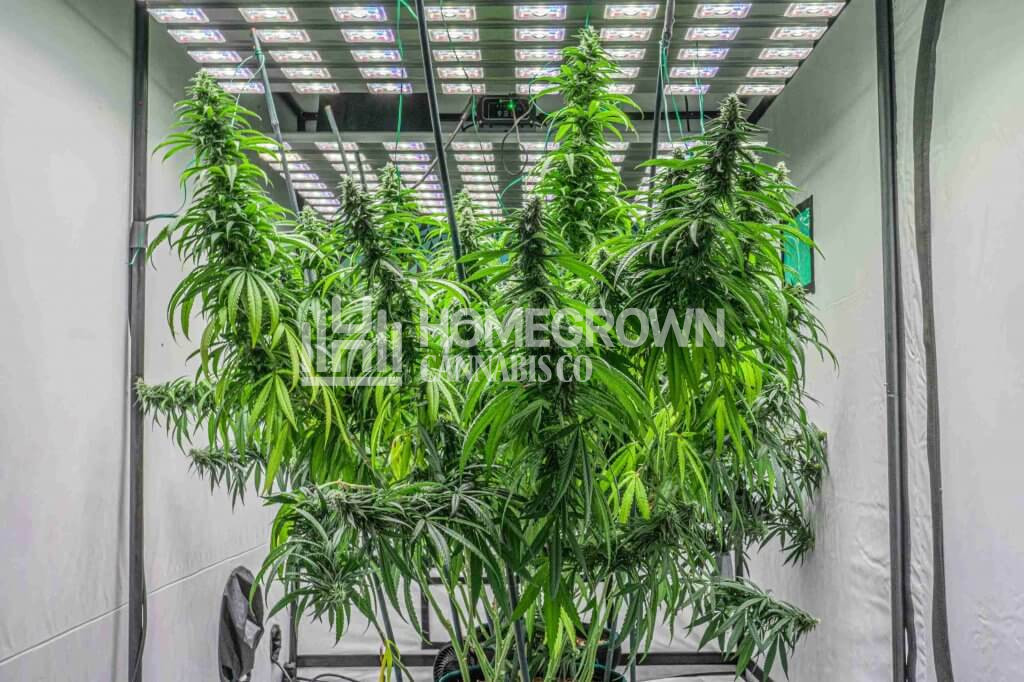
LED vs HPS: 3 pros and cons of each lighting system
The differences we discussed can go either way, depending on your preference, willingness to take risks and experiment, and starting budget.
The LED vs HPS comparison also contains some definite advantages and disadvantages to either option.
HPS grow lights: pros and cons
The saying goes — if it’s not broken, why fix it? The benefits of HPS stand to support that sentiment, but its disadvantages show why growers became interested in an alternative.
| HPS grow lights pros | HPS grow lights cons |
| Full-spectrum light | Quicker deterioration |
| Standardized quality | 2. Non-energy-efficient |
| Consistent exposure | 3. Complicated setup |
Pro 1: Full-spectrum light
Cannabis needs all wavelengths for optimal photosynthesis, and HPS lets your weed crops enjoy a full-spectrum light.
Looking at LED grow lights vs. HPS, even full-spectrum LEDs don’t replicate sunlight as efficiently as HPS. Plus, you can add individual HPS lamps to introduce extra blue or red if you feel like trying different spectrums.
Pro 2: Standardized quality
HPS solutions are already well-established. As a result, they’re also much more consistent on the manufacturing side of things.
If you’re looking for quality at all costs but don’t feel like reading about various brands and how they measure up, HPS is your best bet. Pretty much all companies worth their salt produce HPS lamps you can trust.
Pro 3: Consistent exposure
HID solutions make it easy to ensure optimal light exposure immediately. There’s no trial and error, only bountiful harvests and lush growth in your indoor setup.
Specifications per manufacturer aren’t a concern, either. Set them up and sit back, confident that your marijuana is getting all the light it needs to thrive.
Con 1: Quicker deterioration
Looking at LED vs. HPS, we can’t help but notice that HIDs have a shorter lifespan than their modern counterparts.
Apart from requiring more frequent replacements, they start dimming before they die out. It becomes more challenging to maintain adequate intensity without preemptively switching the bulbs.
Con 2: Non-energy-efficient
LED or HPS for saving the planet and sparing your wallet? Light-emitting diodes.
HPS lights drive up your electricity consumption, making LED more affordable and energy-efficient in the long run.
Con 3: Complicated setup
Sodium lamps might be easier to operate, but they can be hell to set up. Especially in a LED vs. HPS context, the latter option has many large and heavy elements for you to contend with.

LED grow lights pros and cons
LEDs entered the HPS lights vs. LED debate and brought about a sea of benefits that made growers scratch their heads and start thinking outside the norm.
It also has some drawbacks, or we’d all be using LEDs by now. What are the arguments and counterarguments for switching, then?
| LED grow lights pros | LED grow lights cons |
| Customizability | Modular setup |
| Built-in cooling | 2. Poor penetration |
| Excellent supplementation | 3. Higher chances of light burn |
Pro 1: Customizability
Proof of different color spectrums offering various benefits to a cannabis plant is still scarce, but research is advancing the claims.
Are you thinking about LED vs HPS for experimenting with hues to aid your crops? Choose LED. Each diode can emit different light, making it much more straightforward than introducing extra HPS lamps for the job.
Pro 2: Built-in cooling
LEDs are 100% plug-and-play. Everything is already in the box, and you don’t need to introduce any additional elements.
This system includes built-in fans that disperse heat away from the lamp. As a bonus, it’s much easier to cool diodes than HPS bulbs that require additional fans and ducting.
Pro 3: Excellent supplementation
Would you like to optimize your setup using a combination of traditional HID and modern LED? You’ll find that the latter acts as a fantastic supplemental light source.
Besides assisting HPS systems, diodes take the gold in the LED versus HPS debate for natural sunlight greenhouses. You’ll need some help for overcast days, and LEDs are ideal since they’re easier to mount and free to stay near the containers.
Con 1: Modular setup
If a part of your LED system goes off, you can’t simply replace that bulb and go on with your day. You’ll normally have to purchase an entirely new panel due to the modular, integrated technology behind these grow lamps.
Con 2: Poor penetration
Exploring the LED vs HPS grow conditions, you’ll notice that diodes don’t project as well over long distances. Regular light adjustment and extra dedication to trimming become a must to ensure that each branch and flower gets ample light exposure.
This issue becomes super-frustrating when dealing with tall, lanky sativas or indicas with exceptionally bushy foliage.
Con 3: Higher chances of light burn
There’s a misconception going around the LED vs HPS talks. Some guides will tell you that you can keep diodes as close as you want to your cannabis crops risk-free.
Unfortunately, while it won’t cause heat stress, doing so can lead to other kinds of damage. Even worse, light burn is the easiest to catch when the leaves already start yellowing and dying.
LED vs. HPS comparison chart
If you’re not here for a full-blown LED vs. HPS conversation and looking only for a quick overview, we’ve got you covered with our LED vs. HPS comparison chart.
| LED | HPS |
| Newer, more experimental technology | Older, tried-and-tested technology |
| A wider range of colors | Full-spectrum light |
| Higher costs upfront | Higher operational costs |
| Turn on and off instantly | Requires warm up and cool down periods |
| Lower-quality penetration | Comprehensive penetration |
| 180-degree light directionality | 360-degree light directionality |
| Very little heat emission | Higher heat emissions |
| Plug-and-play | Several parts to mount |
| Better for vegging | Better for flowering |
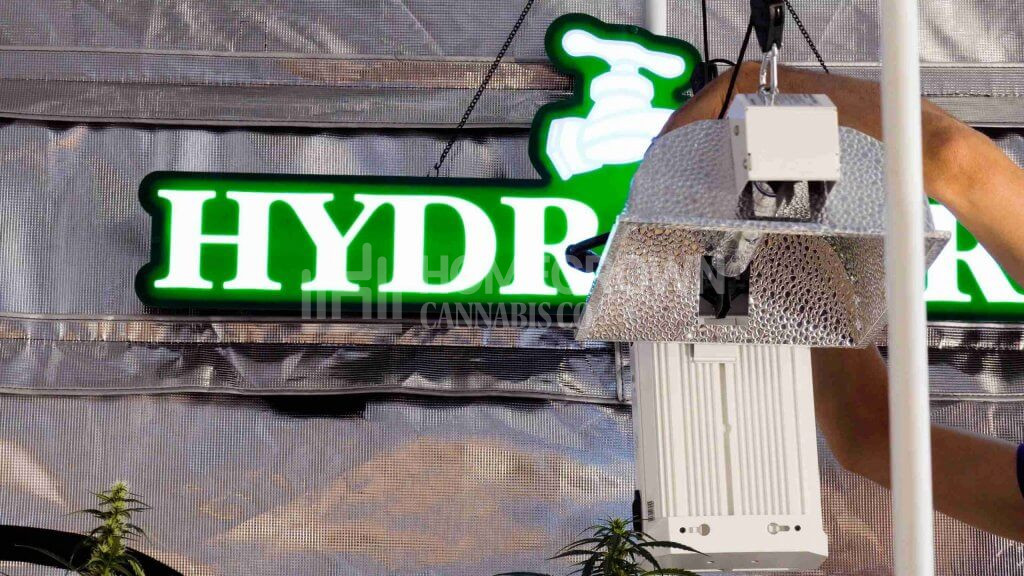
LED or HPS: the verdict
Surprise, the verdict is yours to make. There are perks and downsides to both light systems, and not all growers will find one necessarily better than the other.
We can’t tell you whether LED or HPS is the ideal system for your needs, but we can offer some guidelines.
You’ll choose LED if you:
- Want to spend more to save more.
- Strive for some light spectrum experiments.
- Need a low-maintenance system, especially for larger gardens.
- Have enough time to check on your cannabis plants and adjust lights when necessary.
On the other hand, HPS wins in the HPS vs. LED match for those who:
- Require reliable light penetration.
- Can’t afford to spend a fortune upfront.
- Wish to grow as naturally as possible with the complete light spectrum.
- Aim for maximum yields.
Read through these lists and see which resonates with you more.
If you’re still struggling to decide, explore the cannabis strains you’d like to grow and learn what lights they prefer. For instance, if they’re heat-sensitive, choose LED, but if they thrive in milder light conditions, pick HPS.
Key takeaways about HPS lights vs. LED
In the end, it’s really up to the grower which lighting system they use. Think LED or HPS, or even MH — the cannabis industry is abundant in technology that makes cultivation a breeze.
Get familiar with the options and find the one that feels most comfortable. After all, it’s your hobby and your marijuana. Why should you stick to somebody else’s standards?
Stay tuned to our blog for more handy guides like this LED vs HPS comparison. We seek to cover all the bases of weed growing and smoking and leave no stoner—novice or veteran — behind and unsure how to enjoy everything our fave green plant has to offer.
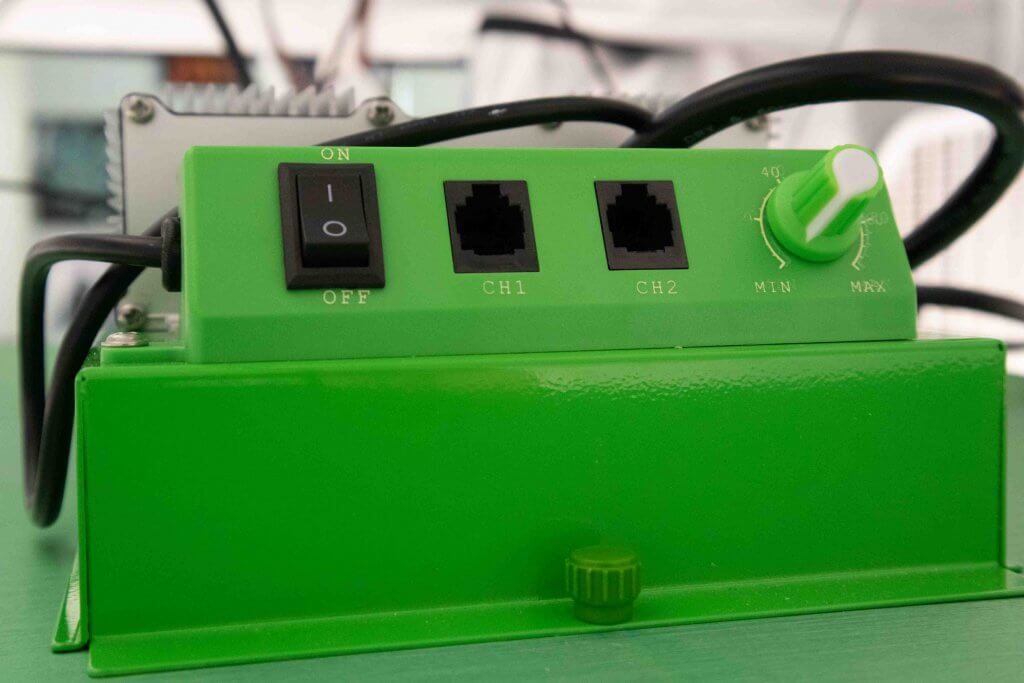
FAQs related to HPS lights vs. LED
Before we leave you to your weed seeds and new indoor garden, let’s answer some LED vs HPS questions we often hear in the community.
What yields more: HPS or LEDs?
People associate HPS lamps with high yields, but many large commercial growers switched to LED in recent years. The question of LED vs HPS yield is no longer that clear cut.
Recent studies show that LEDs use less energy to produce the wattage equivalent to HPS, making the yield per Watt higher with diodes. On the flip side, the penetrating power of HPS lights makes it much more hassle-free to obtain those fat buds.
The best advice we can give is not to worry about this. Focus on providing the optimal conditions, and you'll see a lush harvest with either option.
What LED is equivalent to a 1000w HPS?
Most 650-700 Watt LEDs should match a single 1000 Watt HPS.
What LED is equivalent to 600w HPS?
A 450 Watt LED lamp would approximately equal 600 Watts of HPS.
Why is HPS better for flowering?
When it comes to LED or HPS for flowering, it’s another gold star for HPS, as long as you watch for excess heat. The powerful, consistent, well-distributed lights do wonders for the flowers at the bottom of your cannabis plant, letting them grow fat and full of trichomes.
When you use LED, you have to keep the lamps nearer for blossoming to happen at full force and check for light burn much more often.
Can you use LED with HPS?
Yes, and it’s magic for your cannabis. If your finances and free time allow it, why think LED vs HPS when you can have LED and HPS?
Some growers are aware of the perks of a diode-driven system but find themselves reluctant to transition. If this is you, use LEDs as auxiliary lights for your weed crops.
Keep diodes near the plant and take advantage of the customizable light spectrum as the HPS lamps consistently shine from above.
How many plants can you put under a 1000 Watt HPS?
It depends on the setup, the strain, and your growing style. You can use what other people do as guidelines, but you’ll also have to consider the needs of each marijuana plant in each life stage.
Indoor growers place between six and nine plants under a single 1000-Watt HPS lamp. The number can go much higher with smaller cultivars, even more so if you keep your containers in a SOG or SCROG setup.
Can I switch from HPS to LED during flowering?
You can, but it’s tricky. Suddenly changing the light setup, LED or HPS, while your cannabis plant is in early flowering can disturb the crop. Worst case scenario, they can become hermaphrodites.
Instead, here’s what you’ll do:
- Introduce a narrow-spectrum LED together with HPS, but dim both.
- Keep the combination running for at least three days.
- Start reducing the HPS action until you can remove it.
Can you veg with LED & flower with HPS?
Yes. In fact, this is ideal if you can afford to purchase both technologies.
Vegging cannabis requires 18 hours of light, which can skyrocket your utility bill and turn the grow room into a sauna. LEDs solve both issues. Switching to HPS for flowering ups the intensity and gets the production going.
Tip: Make the light transition gradual to avoid stressing your garden.
What lights do professional growers use?
We wouldn’t be having this LED vs HPS debate if both options weren’t super popular with commercial weed producers.
At the moment, most indoor growers go for HPS or metal halide HID lights. Some modern farms are turning to LEDs for increased cost-effectiveness and efficiency.
If you’re wondering about the brand, best-sellers on Amazon include EXLENVCE and Giixer LEDs, as well as Vivosun HPS.

